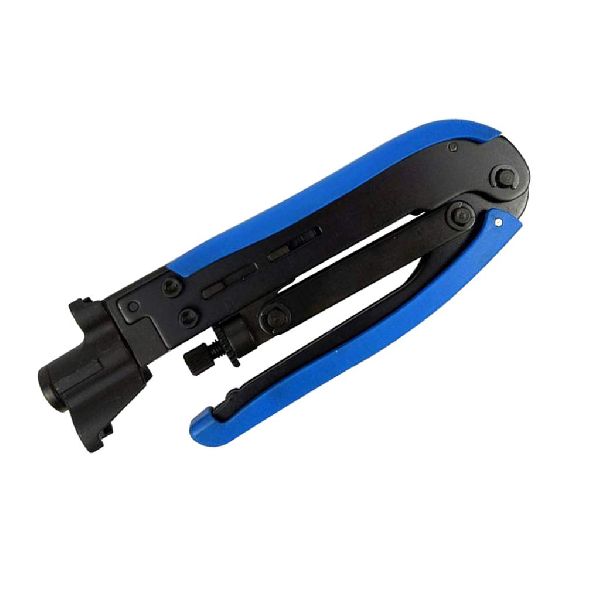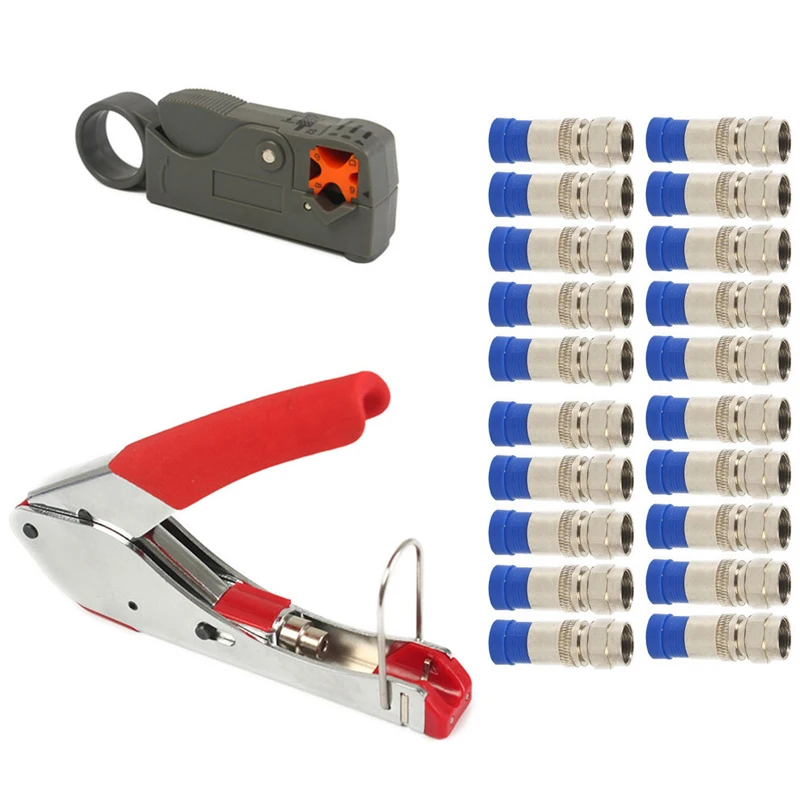

This compression crimper looks and feels like it was built to last! It’s much heavier than I expected yet small, simple to use and adjust. The Klein VDV211-100 isn’t made in the U.S., but comes with a warranty for the normal lifetime of the tool as well as the Home Depot 90-day return policy. There’s a retaining clip for keeping the handles secure when not in use.

The crimpers are comfortable to hold and work with and fit and finish are excellent.

The tool crimps compression F, BNC and RCA connectors onto coax cables without having to change any dies, parts, etc., and are good for tight spaces. The Home Depot website has a nice video on how the things work. These Klein VDV211-100 crimpers do a really nice job on coax.
#COAX CRIMPER PATCH#
I’m a semi-retired computer technician and, while I try to push the cabling jobs off on younger techs, sometimes I have to run Ethernet or Coax cable myself – or make patch cables for a quick fix. They’ve earned an immediate spot in my road warrior kit. I gotta admit – it took about ten minutes to make me a fan of this crimper. Buy the tools used in this instructional guide.This review is for the Klein Coax Crimper model number VDV211-100, which I got a chance to check out. Repeat steps 1 through 6 on the other end of the cable. Step 7 – Crimp the other end of the cable If crimping BNC or RCA then do NOT use the included adapter with the compression crimp tool! Give the connector a good tug to ensure it is securely in place. You can now open the tool and remove the crimped end of the cable.
#COAX CRIMPER FULL#
Squeeze the handles together until the full range of crimp motion has been completed. These plates will keep the connector in place during the crimp process. Insert the connector into the adapter piece on the crimp tool and have the base of the connector rest on top of the metal stop plates.

Step 6 – Crimp the connector on to the cable You need to make sure the cable is in completely or the crimp may not work correctly. Use moderate force and push the cable all the way into the connector. Step 5 – Insert the cable into the compression connector This will leave the 1/4″ dielectric wrapped in foil shield and another 1/4″ of center conductor exposed. You should now have roughly half an inch of cable stripped to these two stages.įold the braided shield over the outer jacket and away from the dielectric insulator. Use the same rotary motion as the previous step to remove the jacket from the cable. Use the other cavity to strip only the outer jacket 1/4″ away from where the conductor is now exposed. You should now have 1/4″ of conductor exposed at the end of your cable After a few rotations the dielectric insulator, foil shield, braid and outer jacket should come off with ease. In a circular motion rotate the stripper around the coax cable. Line up the cutting blade so it is at 1/4″ away from the flush end of the cable. This cavity is easy to identify as it has a notch for the conductor. Insert the cable into the stripper cavity that is designed to remove all layers of the cable except the center conductor. Pull out enough cable to run the length required for your installation. We will be using RG6 cable and RG6 F-type Compression Connectors, which come included in the 902-340 CATV “F” Compression Tool Bundle. The same techniques can be used on various sized cables. This process will work for F, BNC, and RCA style connectors.
#COAX CRIMPER HOW TO#
This guide will explain how to create your own coax cable using compression style CATV connectors.


 0 kommentar(er)
0 kommentar(er)
